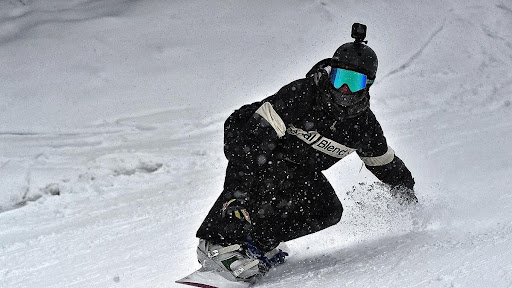Embark on a seamless alpine adventure with robust ski goggles! These powerful protective eyewear compete with rushing winds and splashing snow, giving you a clear and panoramic view. Even if you are a glasses wearer, you can unravel the fun with ski goggles over glasses or OTG ski goggles some might refer to.
For your exhilarating slope exploration, this article aims to navigate essential do’s and don’ts for your ski goggles over glasses across 3 crucial phases: before buying, when using, and after using. After reading, you can elevate your skiing experience with takeaway insights.

Before Buying: How to Choose the Right Ski Goggles over Glasses
-
Do Research and Understand Your Specific Needs
The first thing to find the perfect OTG ski goggles is to conduct thorough research. Take into account the typical weather conditions you will encounter while skiing. For bright, sunny days, go for darker lenses for better visual contrasts, while lighter tints should be your choice in overcast or low-light conditions. You can look for goggles with interchangeable lenses for better versatility.
Check anti-fog coatings and functional ventilation designs, as they work effectively to prevent blurred vision caused by vapor accumulation and temperature changes. Learn different types of goggles to determine which one to opt for, like cylindrical and spherical snow goggles.
-
Don’t Compromise on Size, Fit, and Lens Quality
The least thing to do is to pick goggles that are visually appealing but unhelpful in practice. The key is to check a series of numbers, like the head circumference size. As you are wearing glasses, choose those with OTG labels to avoid pressing feelings.

Another vital figure you should consider is the UV protection level, as human eyes cannot withstand the lasting intensified glare reflected by the snow ground. From this perspective, 100% UV400 protection is non-negotiable. Paired with anti-scratch features, they will exhibit their practicality when you are tearing off the snow terrain.
When Using: How to Maximize Ski Goggles on the Slopes
-
Do Adjust the Goggles Properly and Keep them Clean
When using ski goggles over glasses, start your race only when you’ve positioned them to cover both the glasses and eyes adequately. A high-elastic strap helps accommodate various helmets for a snug fit. You may use a soft (like microfiber) cloth to clean your lenses gently before your adventure. In case on-the-go maintenance is needed, you can carry anti-fog wipes in your pockets.
-
Don’t Overlook Signs of Fogging
A fuzzy vision is not just an irritating hassle; it could also lead to severe accidents. Therefore, it is advisable not to remove goggles frequently as it might exacerbate fogging. Don’t use abrasive materials or clothing as it may damage the lens. When you notice restricted visibility, pause at a safe spot, take your prepared soft cloth to wipe the accumulated moisture, and then proceed with your journey.
After Using: How to Maintain Ski Goggles over Glasses Properly for Longevity
-
Do Clean & Check & Store Appropriately
After thoroughly savoring the experience, gently shake off the possible snow on the lens and wipe the lens with our old friend, a soft cloth. You might use a dedicated goggle cleaner as well. Inspect if there are any scratches or damages and replace them if necessary. When not in use, store your ski goggles in a protective case.
-
Don’t Treat Ski Goggles in This Way
Avoid your fingers’ direct touch to the lens, as oils and sweat might leave smudges. It is highly recommended not to place your ski goggles in direct sunlight or near heat sources, as excessive heat can pose threats to the lens and frame. Instead, keep them in a well-ventilated area to prevent moisture buildup. And do not store your OTG ski goggles before they are thoroughly air-dried.
Yoziss and Its Best Ski Goggles 2024
Devoted to making the joy of skiing accessible to all, Yoziss stands out among diverse ski goggles brands with its comprehensive product range, especially its ski goggles over glasses.

For instance, its SG73 Snow Goggles With Interchangeable Magnetic Lens Blue are specially designed for glasses wearers. Adopting premium Revo lenses, it provides 100% UV400 protection and anti-scratch performance. As its name suggests, these blue-lens ski goggles feature magnetic lens swap technology, making rapid and effortless lens changes accessible. The brand’s attention to detail can also be seen in the strap, which has excellent stretchability, rendering Yoziss a popular choice among ski enthusiasts.
Conclusion
Snow sports can be exceedingly fun with proper protective gear, and glasses-wearing should not diminish such fun. By developing versatile ski goggles over glasses, Yoziss adheres to its motto with concrete practices. Its team, which includes around 50 passionate engineers, shows expertise in every detail.
From ski goggles over glasses to magnetic ski goggles, it also satisfies different personal style preferences with colorful goggles like red ski goggles and blue ski goggles. If you are looking for blends of functionality with style, Yoziss could be your ideal destination to explore.

